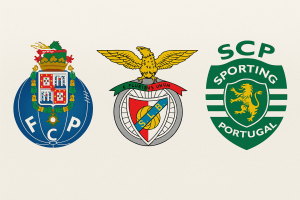By Jorge Araújo
Team Work Consultores
What is a High Performance Team anyway? A group of people with a certain degree of specialisation who interact in the service of common objectives. This obviously entails enormous complexity, as it involves achieving high levels of collective performance among people who, in their individual professional practice, are mainly characterized by what distinguishes them on an individual level.
If we understand a high-performance team as a group of people, we are faced with a social reality in which people with their individual characteristics, often centered in their comfort zones, feel (or not!) the need to cooperate in the service of the collective, with the aim of making their team a whole that is greater than the sum of its parts.
People, men and women, in all their behavioral diversity, who in their professional practice “feel and make you feel”, revealing previously acquired behaviors through “bodily knowledge” that continually expresses habits, beliefs, values, etc. Its members were born and have lived through a continuous series of experiences that have enabled them to “be who they are” according to the behavioral training they have previously received from their family, school, university, club, military service, etc.
Human beings who, as members of a High Performance Team, are previously (All!) human beings who influence and are influenced in all their previously acquired behavioral complexity; thus revealing Personal and Professional Skills, Opinions, etc. when requested. Sometimes they want to be “right”, not listening to anything or anyone or, on the contrary, showing the necessary ability to “make themselves heard” because they show the necessary attention and care for those with whom they communicate.
With obvious needs in terms of effectiveness, alignment, organization, skills and focus. A high-performance team needs to monitor its own performance at regular intervals and continually ask itself questions:
Are we being effective? What is the balance between proposed objectives and achieved results? Are we aligned with the common objectives? Or, on the contrary, is it “every man for himself”? Are we organized? Are everyone’s tasks clear and well defined, and are we collectively organized? Do we have the necessary skills? Do we have to teach and gradually improve or, given the urgency of the need, do we have to recruit?
Are we focused and committed? Do we have the collective concentration and commitment required? Is each member of the team committed to the common goal previously set to be achieved? Do all team members show commitment and, if necessary, a capacity for sacrifice in the service of the team’s objectives?
Leadership is needed! All of this will only become possible, of course, when a Leadership emerges in the Team that is capable of inspiring and mobilizing a significant collective expression; where all the respective members, Leader included, demonstrate at all times a total willingness to “Serve the Whole” rather than “Serve the Collective” to which they belong.
A leader who organizes, defines tasks, teaches how to do them, monitors them and gives continuous feedback, controlling the performance of those he leads. Recruits if necessary, according to the needs revealed by the Team at any given time.
As in any organization, a “High Performance Team” has “Critical Success Factors”. Overcoming the ever-present relational conflicts by creating a relational climate based on mutual trust and an ever-increasing commitment to the common goals to be achieved. Periodically monitoring implementation and whether the targets set are being met. Continuously fulfilling a desired process of Continuous Improvement.
A team made up of members who complement each other, including “Individuals” who make a difference for the better in everything they decide; “Specialists” who stand out in certain areas due to their high level of execution; “Team Players” who are constantly concerned with the collective interest and with each of their team-mates; “Piano Carriers” who do what nobody likes to do but which has to be done for the team to succeed; “Young Potentials” who represent the future of the Team, both as possible “Individuals” and as “Specialists”.
Members who, as we have already said, interact and communicate with each other in the service of the common goals previously set, communicating in an assertive and emotionally convincing way, concerned with the need for what they want to communicate to be understood and taken on board by those with whom they communicate.
Both collectively and individually, “Whoever doesn’t get better, gets worse!”
This implies that in a “High Performance Team” there has to be the ongoing purpose of fundamental and essential continuous improvement.





